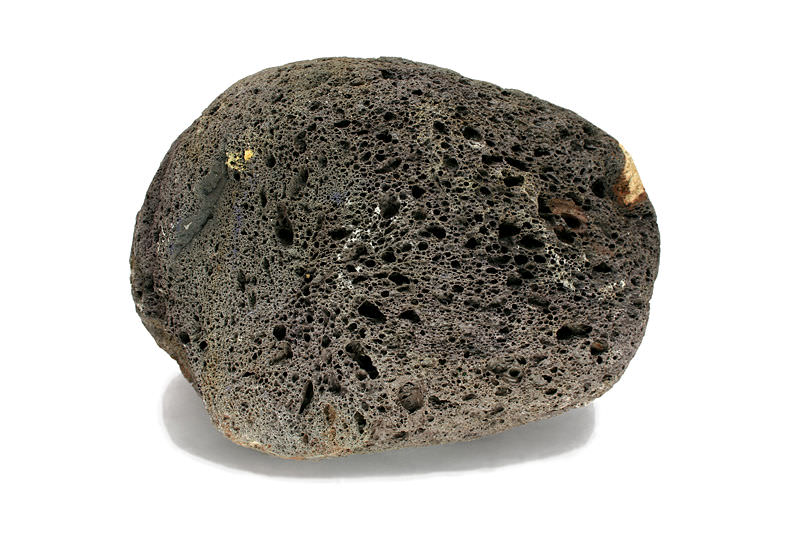[/caption]
Scoria is a kind of rock produced by volcanic activity. Like pumice, it forms when lava which is rich in gas cools quickly. It forms when molten rock is rising in a volcanic pipe, the decreasing pressure allows the gas to expand out (like opening a can of soda releases carbon dioxide).
Scoria rocks can either form inside the volcano, and be ejected out in eruptions. Or it can erupt as lava that cools quickly before the gas bubbles can escape the rapidly cooling rock. Scoria is similar to pumice, in that it has bubbles of gas trapped within it, but the bubbles are much smaller. Unlike pumice, scoria doesn’t usually float in water.
Another name for scoria is cinder, and it’s the primary component of cinder cones. These are relatively small volcanoes that appear suddenly, built up to a maximum height of a few hundred meters and then go extinct. The cone builds up from the scoria, rock and ash ejected from the volcano, which rains back down around it.
While pumice ranges in color from white to black, scoria is darker in color, ranging from dark brown, to black to red. The Easter Island statues were carved out of volcanic rock, and the red stones on top were carved out of a different type of scoria rock prized for its red color.
We have written many articles about volcanoes and rocks for Universe Today. Here’s an article about obsidian, a type of volcanic glass produced when lava cools quickly. And here’s an article about basalt, rocks formed from cooled lava.
Want more resources on the Earth? Here’s a link to NASA’s Human Spaceflight page, and here’s NASA’s Visible Earth.
We have also recorded an episode of Astronomy Cast about Earth, as part of our tour through the Solar System – Episode 51: Earth.

